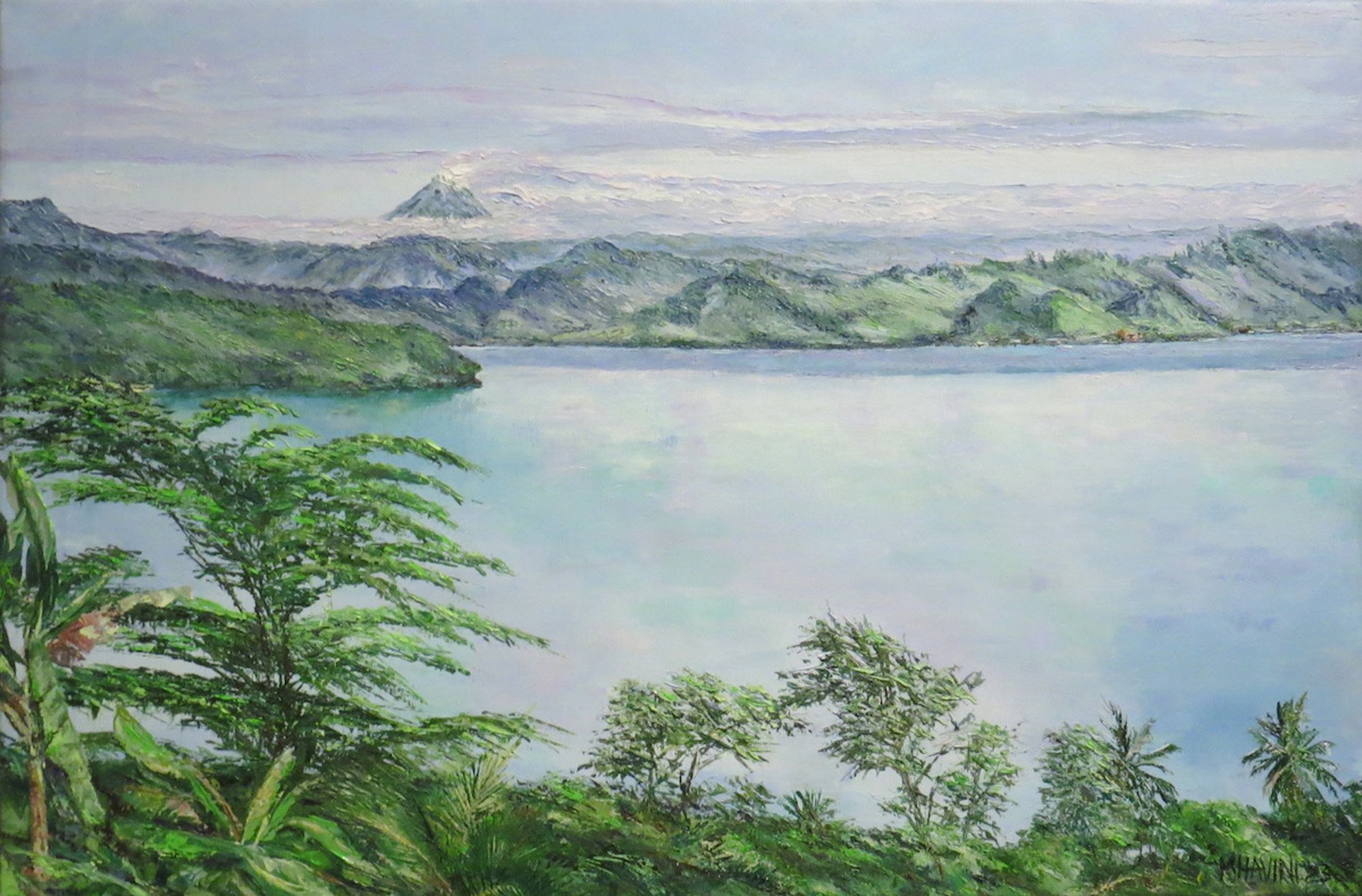
(Dunedin Public Art Gallery)
Taloi Havini is a native of Bougainville, an island which was for many years wartorn, seeking independence from Papua New Guinea but — as it is a major source of natural resources — unwilling to be relinquished by the country. In "Shared Aspirations", Havini delivers a meditation on the 1990s peace process.
The exhibition presents the gallery as conference room, tent walls surrounding a large central table. The table displays archival materials relating to the peace process and the journey which led to it. Around the gallery, video footage is presented, some of it archival footage filmed by the artist’s father, Moses, as well as a series of oil paintings by the artist’s mother, Marilyn — predominantly landscapes of Bougainville.
The collaboration with the artist’s parents stresses the family bonds and ancestral links which tie the Bougainvilleans to their land, and the active role family has taken in the struggles for independence. The exhibition becomes symbolic of the peace process, with the chronology shown by archival materials and connection with the land represented by the paintings. Poignantly, the damage to the land by mining, shown by several paintings, brings to mind the destruction wrought by war. The placing of the large An Imaginary Line, based on an old photograph of the island, in the "tent’s entrance pins the exhibition firmly to its location.
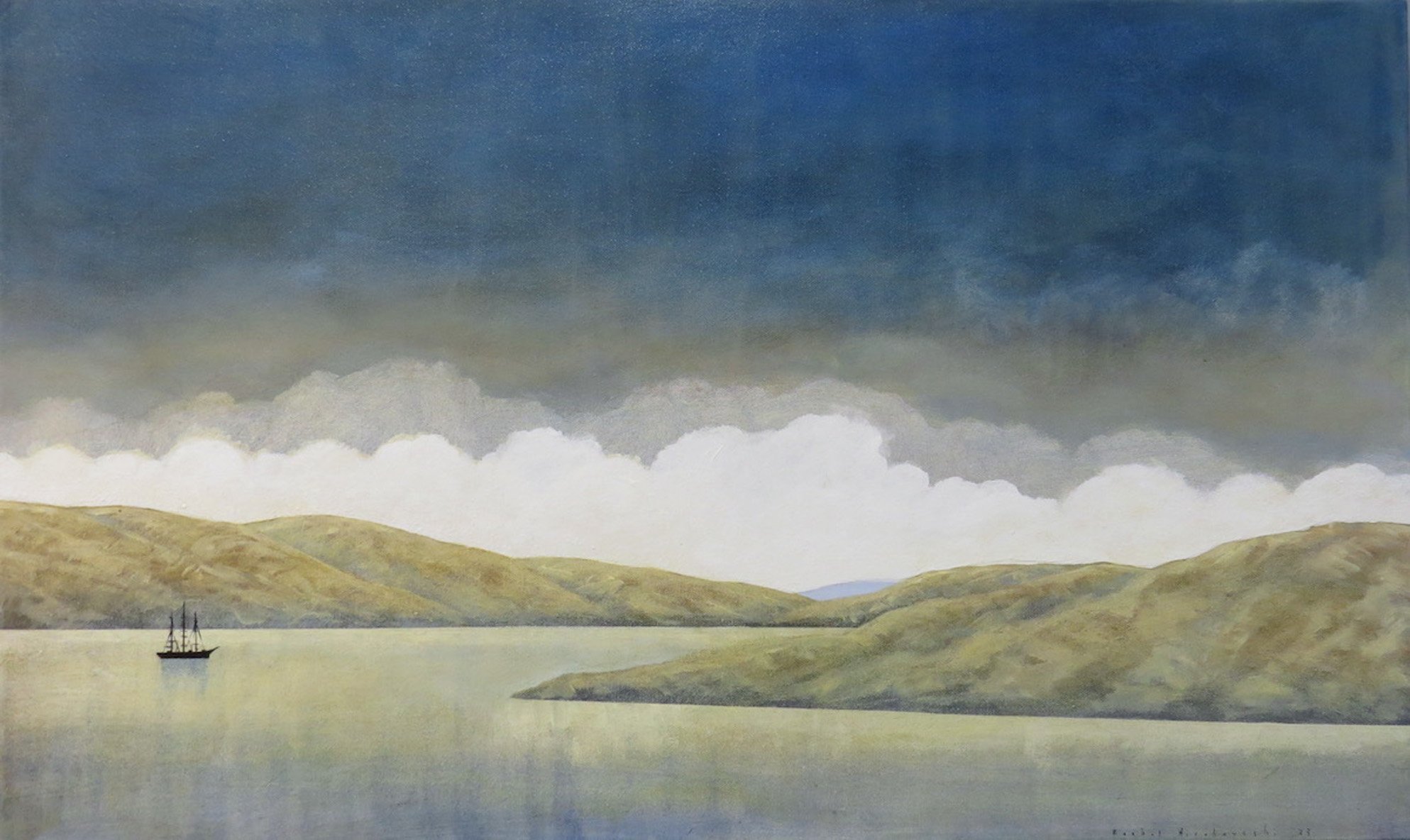
(Moray Gallery)
There is a sense of quiet unease in Rachel Hirabayashi’s "The Moment Before".
In a series of acrylic works on canvas, the artists presents a time immediately before action, an unresolved chord of history. In the works, historic sailing ships appear in quiet waters lapping against undeveloped lands, occasionally dotted with rudimentary church buildings. We cannot tell from the views whether the ships are departing or arriving, whether this is newly discovered land or the homeland of the ships. Yet there is a distinct atmosphere that some form of contact will be made and that the consequences will be far-reaching. This all-pervasive feeling is compounded by the gathering storm clouds present in many of the works.
The scenes are depicted in a reduced palette of sepia and blue,
deliberately reminiscent of early colonial watercolour works, the only departure being in the jarring vermilion of the churches. The suggestion seems to be that the church was an often jarring influence on new lands that did more than most to change the seemingly prelapsarian paradise of newly discovered islands.
We sense that the lands depicted are our own shores as they were in the early 1800s, but the feeling generated is universal and may relate to the arrival of new settlers and new ideas to any innocent land.
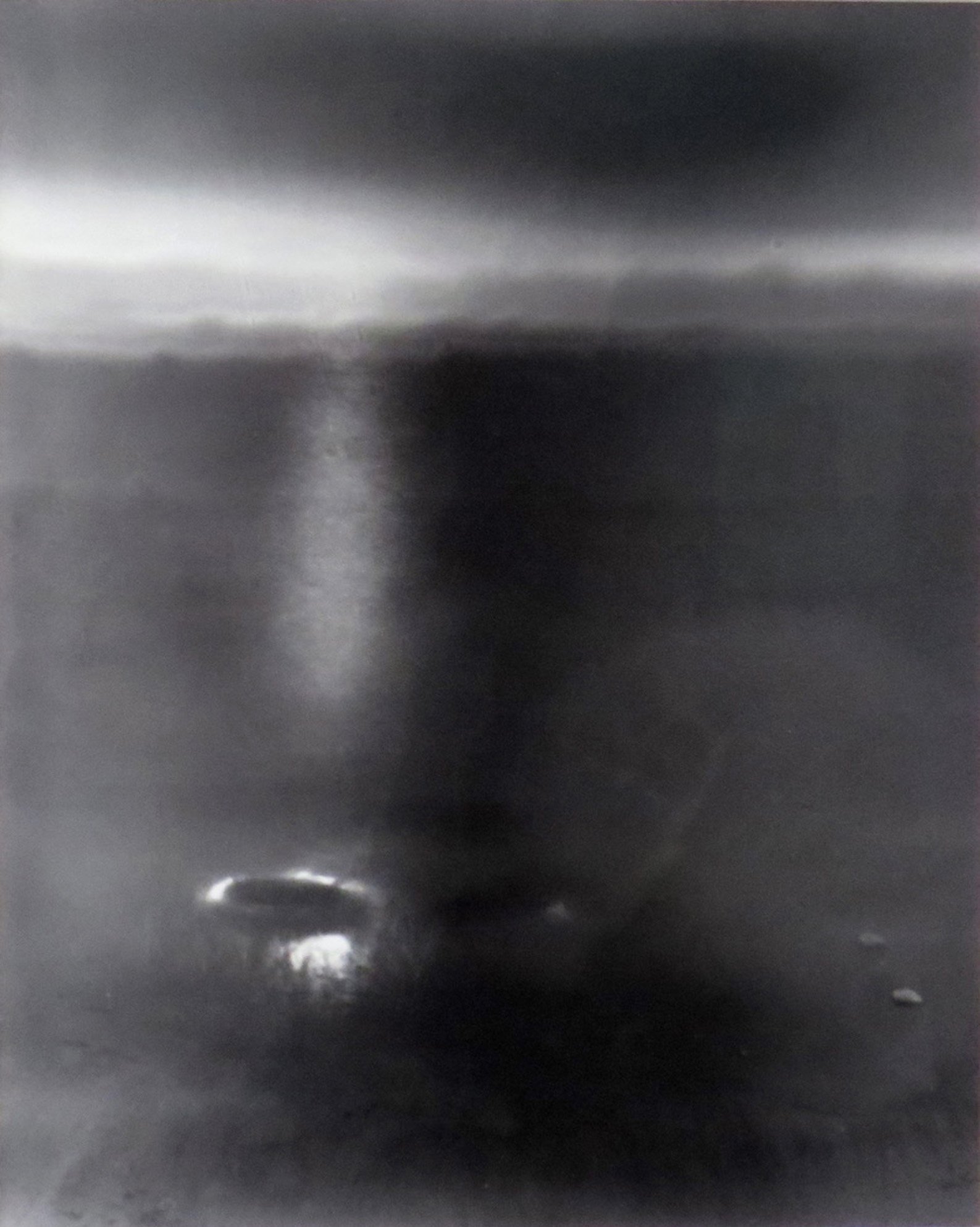
(Olga)
Thomas Lord’s "Etheric Bodies" is a philosophical journey into the world of ephemera, as examined through the photographic process.
Lord’s images attempt to convey the feeling of the imperfect nature of memory, of the traces that remain of what were concrete, tangible moments. His photographs become shadows of extinct reality, testimony that something existed which no longer has anything more than a fleeting mental trace. In parallel with this, Lord examines the photographic process, and specifically the process of transferring moments of light on to sensitive material in traditional analogue photography. The vulnerability of the moment is expressed through the medium of monochromatic photograph. The nature of the medium, always at one remove from our solid, colourful world, adds to the sense of loss, as does the deliberate blurring of the image. Many of Lord’s photographs are deliberately mistily vague and indistinct, the photographic equivalent of colourfield painting, forcing viewers to seek out their own meaning.
In the "Etheric Bodies" series, the attempt to capture the ephemeral is made more explicit, in a series of images of objects discovered and retrieved on family walks. Like the stones and shells found during a day at the beach, the objects become dull and lose their magic once removed from their surroundings, becoming painful yet poignant reminders of loss.
By James Dignan

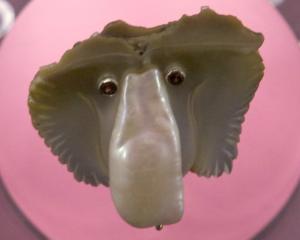

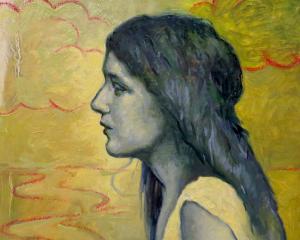
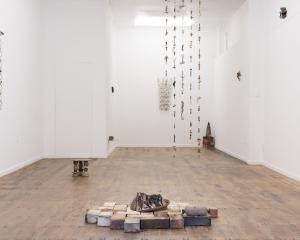




![Rozana Lee, "Drawn to see(a)" [Installation view]. Photo: Beth Garey](https://www.odt.co.nz/sites/default/files/styles/odt_landscape_small_related_stories/public/story/2024/10/blue_oyster_r_lee.jpg?itok=IGhlKMSl)


